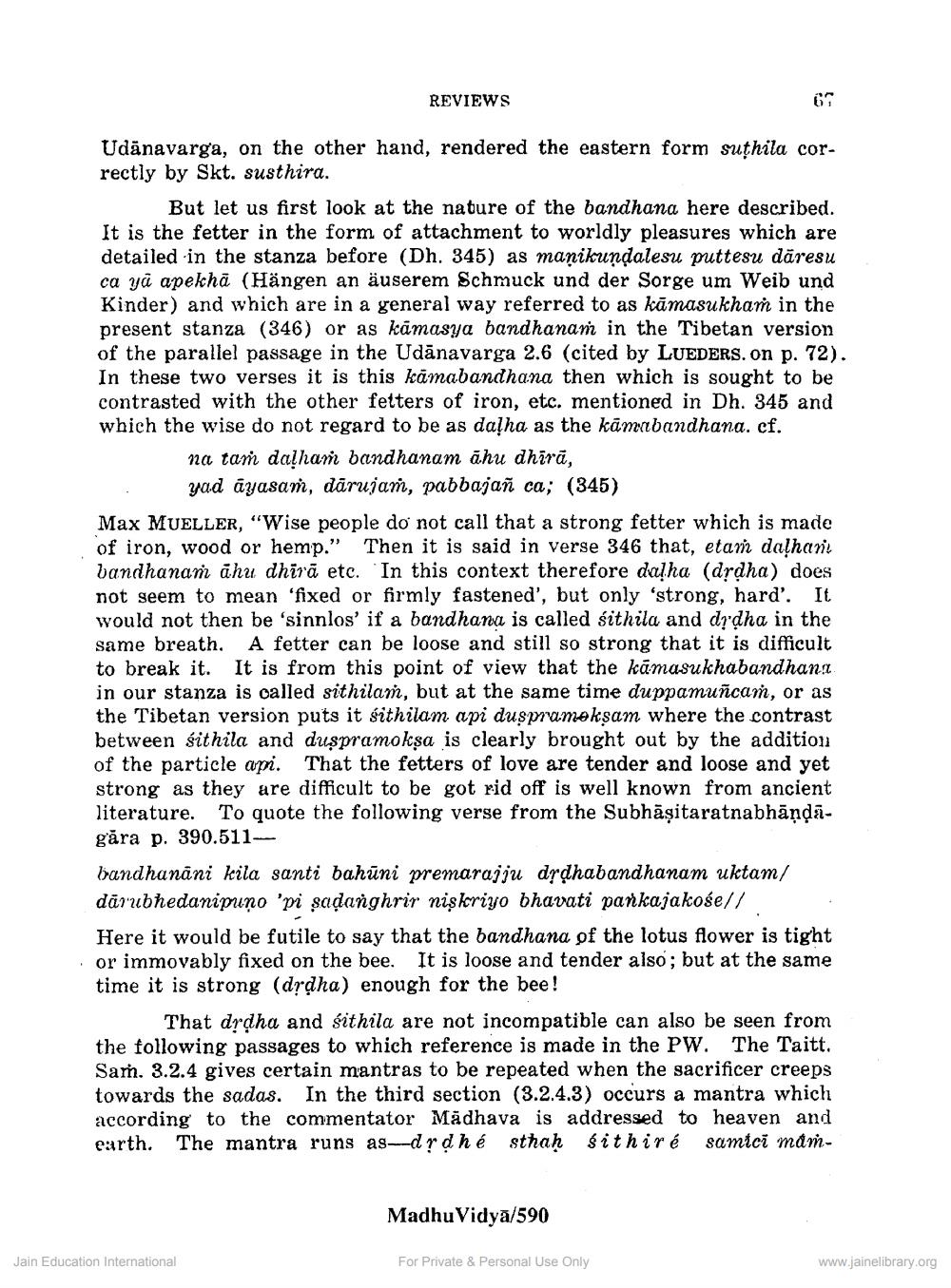________________
REVIEWS
Udänavarga, on the other hand, rendered the eastern form suthila correctly by Skt. susthira.
But let us first look at the nature of the bandhana here described. It is the fetter in the form of attachment to worldly pleasures which are detailed in the stanza before (Dh. 345) as manikundalesu puttesu dāresu ca yū apekha (Hängen an äuserem Schmuck und der Sorge um Weib und Kinder) and which are in a general way referred to as kāmasukhan in the present stanza (346) or as kāmasya bandhanan in the Tibetan version of the parallel passage in the Udānavarga 2.6 (cited by LUEDERS. on p. 72). In these two verses it is this kāmabandhana then which is sought to be contrasted with the other fetters of iron, etc. mentioned in Dh. 345 and which the wise do not regard to be as dalha as the kāmabandhana. cf.
na tam dalhan bandhanam āhu dhirā,
yad ayasan, dārujam, pabbajan ca; (345) Max MUELLER, "Wise people do not call that a strong fetter which is made of iron, wood or hemp." Then it is said in verse 346 that, etan daļhanı bandhanaṁ ahu dhira etc. In this context therefore daha (drdha) does not seem to mean 'fixed or firmly fastened', but only 'strong, hard'. It would not then be 'sinnlos' if a bandhana is called sithila and drdha in the same breath. A fetter can be loose and still so strong that it is difficult to break it. It is from this point of view that the kāmasukhabandhana in our stanza is called sithilań, but at the same time duppamunca, or as the Tibetan version puts it sithilam api dusprame kşam where the contrast between sithila and duspramokṣa is clearly brought out by the addition of the particle api. That the fetters of love are tender and loose and yet strong as they are difficult to be got rid off is well known from ancient literature. To quote the following verse from the Subhāşitaratnabhāņdāgăra p. 390.511bandhanāni kila santi bahūni premarajju drdhabandhanam uktam/ dārubhedanipino 'pi sadanghrir niskriyo bhavati pankajakose// Here it would be futile to say that the bandhana of the lotus flower is tight or immovably fixed on the bee. It is loose and tender also; but at the same time it is strong (drdha) enough for the bee!
That drdha and sithila are not incompatible can also be seen from the following passages to which reference is made in the PW. The Taitt. Sam. 3.2.4 gives certain mantras to be repeated when the sacrificer creeps towards the sadas. In the third section (3.2.4.3) occurs a mantra which according to the commentator Madhava is addressed to heaven and earth. The mantra runs as-drdhé sthah sithiré samici már
Madhu Vidya/590
Jain Education International
For Private & Personal Use Only
www.jainelibrary.org




